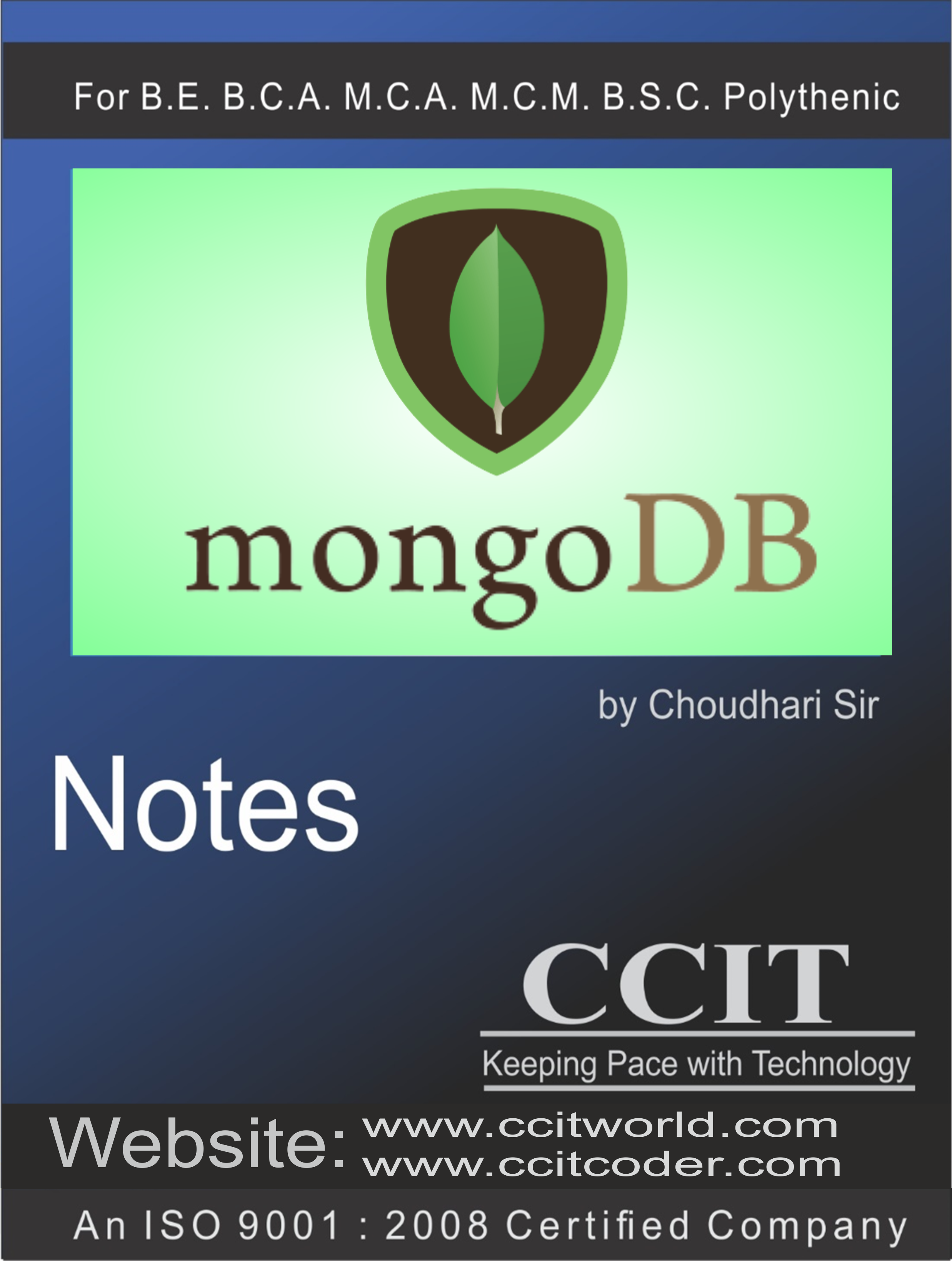MongoDB
Learn MongoDB to embrace NoSQL database advantages. It offers flexible schema design, horizontal scalability, and efficient handling of unstructured data. Mastering MongoDB enables effective development for modern, data-intensive applications.
Duration | 1 months

Course Objective
Master MongoDB with a comprehensive course covering data modeling, CRUD operations, aggregation, indexing, and security. Acquire skills in building scalable and high-performance MongoDB databases for modern applications and systems.

Key Features
Duration : 1 months
Theory Lectures : 36
Practical Lectures : 30
Course validity : 4 Years
Theory Notes : 
Certificate : 
Thing You will Learn
1. Introduction
- Introduction to MongoDB
- Why MongoDB?
- Key Features
- Data Modeling in MongoDB
- CRUD Operations
- Indexing and Performance
- NoSQL Database
2. MongoDB Installation
- Download MongoDB Installer
- Run the Installer
- Setup Type
- Service Configuration
- Verify Installation
- System Environment Variables
3. Communication with MongoDB
- MongoDB Shell
- MongoDB Compass
- MongoDB Server
4. Database
- Database Basics
- Creating a Database
- Explicit Database Creation
- Database Connection String
5. Collection
- Creating Collections in MongoDB
- Fundamental Steps for Data Organization
- Implicit Collection Creation
- Creating Collections with Insert Operation
- Creating Collections Using Shell with db.createCollection
6. Documents
- MongoDB Stores Data
- JSON documents
- BSON documents
- Document Structure
- Single Field Documents
- Embedded Documents
- Arrays Field Documents
- Arrays of Documents
- Document References
- GridFS Documents
- Geospatial Documents
- Nested Documents
7. Data types
- String
- Numeric
- Boolean
- Object ID
- Array
- Embedded Document
- Date
- Null
- Binary Data
- Timestamp
- Min/Max Keys
8. Data Modeling
- Document-Oriented Model
- Embedding Documents
- Referencing Documents
- Normalization and Denormalization
9. Operators
- Comparison Operators
- Logical Operators
- Element Operators
- Array Operators
- Evaluation Operators
- Update Operators
- Array Update Operators
- Bitwise Operators
- Text Search Operator
- Geospatial Operators
10. Inserting Document
- INSERT method
- Insert a Single Document
- Insert Multiple Documents
- Insert with Specified _id
- Bulk Write Operations
- Insert if Not Exist
11. Updating Document
- Document Updates
- Updates single document
- Updates multiple documents
- Sets and Removes value of field
- Increment field from document
- Adds and Removes element to array
- Arrays during updates
12. Deleting Document
- Delete Method
- Delete a Single Document
- Delete Multiple Document
- Delete All Documents in a Collection
- Delete Documents Using Criteria
- Delete Documents with a Timeout
- Delete a Document by ID
13. Find Document
- Find Method
- Retrieve document
- Conditions filter document
- Equality Match
- Comparison filter document
- Combine multiple conditions filter document
- Limit the fields returned
- Sort the result
- Limiting Rows
- Control number returned document
- Finding Matching Patterns
- Finding Regular Expressions
14. Indexing
- What is an Index
- Creating an Index
- Compound Index
- Descending Index
- Unique Index
- Partial Index
- Sparse Index
- Text Index
- TTL (Time-To-Live) Index
- List Existing Indexes
- Dropping an Index
15. Aggregation Framework
- Pipeline Concept
- Pipeline stages
- $match
- $group
- $sort
- $project
- $limit
- $skip
- $unwind
- $lookup
- $facet
- Aggregation expressions
- Multiple pipelines single aggregation
- Conditional Expressions
- Aggregation with Date
16. Schema Validation
- Introduction Schema Validation
- Validation Action
- JSON Schema
- Field Validation
- Specify Expected Datatypes
- Compound Indexes
- Validation Level
- Partial Validation
- Custom Validation Functions
17. Transactions
- Transaction Basics
- Transaction Properties (ACID)
- Start a Transaction
- Commit a Transaction
- Abort a Transaction
- Example of a Transaction
- Read Concern and Write Concern
18. MongoDB Atlas
- What is MongoDB Atlas
- Creating an Atlas Account
- Creating a New Cluster
- Connection Setup
- Connecting from MongoDB Shell
- Database Users
- Scaling Clusters
- Connect Using a Driver
CCIT Notes
CCIT Notebook on MongoDB offers a user-friendly interface for efficient MongoDB development. Seamlessly integrate with MongoDB, empowering developers to streamline coding and build dynamic applications with ease and precision.
- Theory Notes
- Course Book
- PPT Notes

Certificate
Elevate your career prospects with CCIT's Mongo DB Certificate, recognized by leading companies. As an ISO-certified institution, our certificate features QR code verification, ensuring authenticity and opening doors to top-tier opportunities in the industry.

